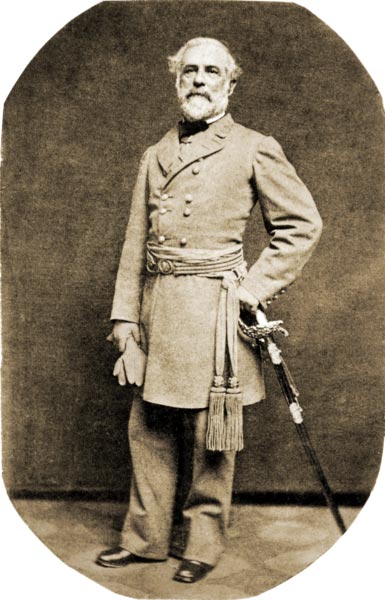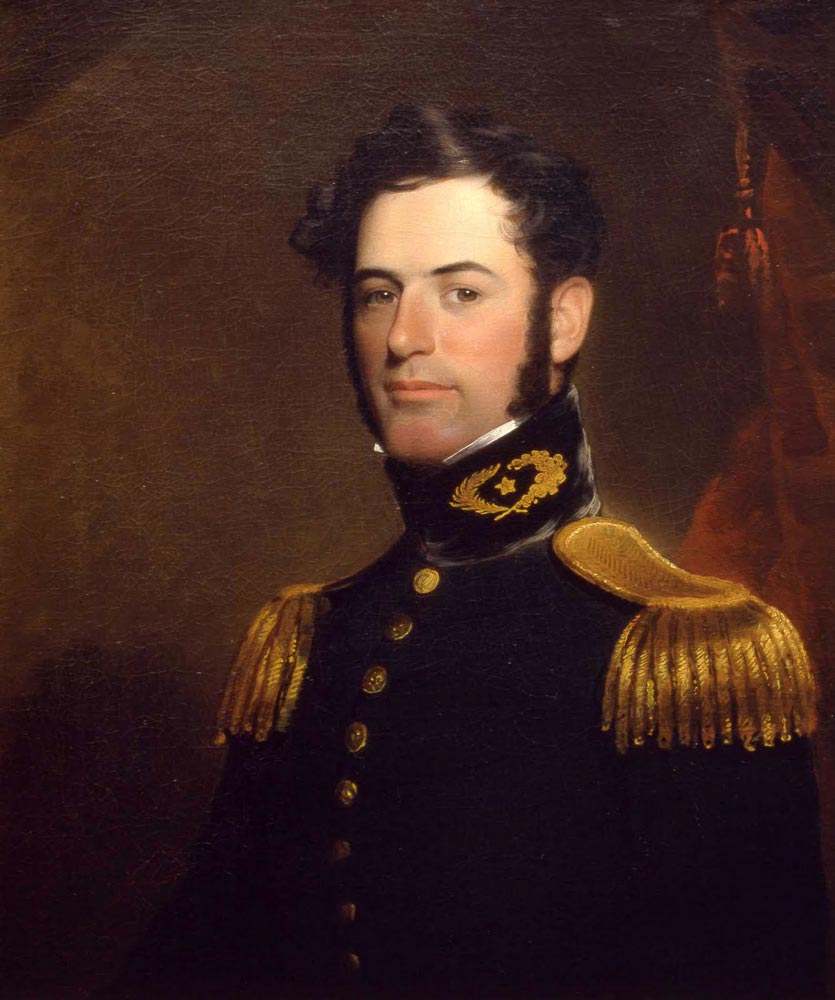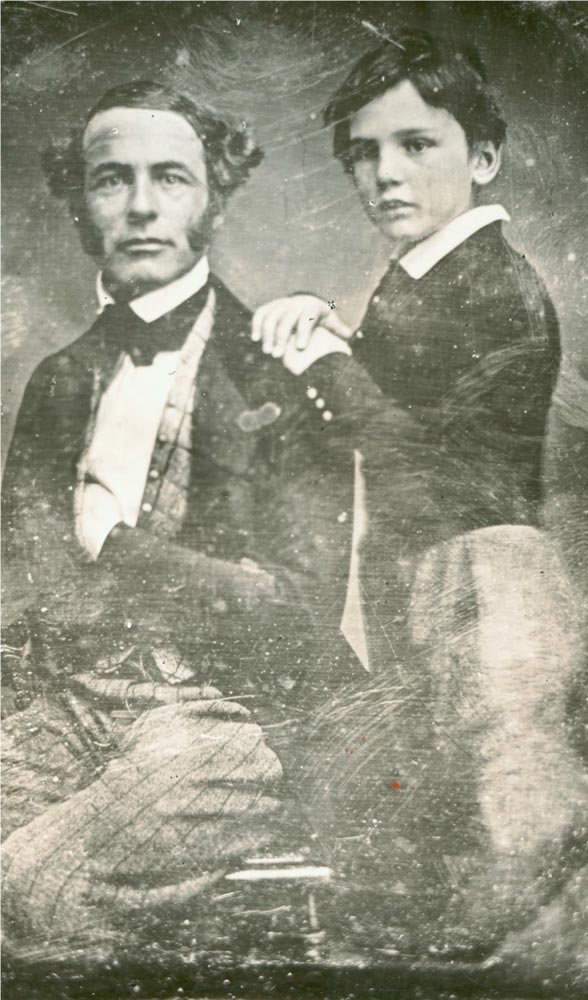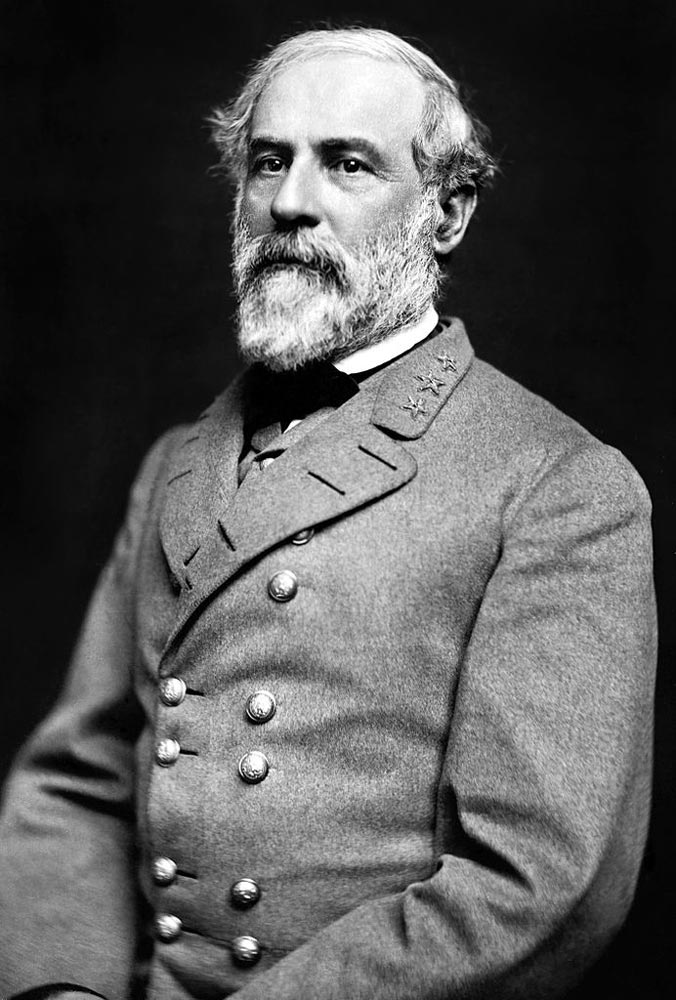| Robert E. Lee | |
|---|---|
 |
|
| Born | Jan. 19, 1807 Stratford Hall, Virginia |
| Died | Oct. 12, 1870 (at age 63) Lexington, Virginia |
| Allegiance | United States of America Confederate States of America |
| Years | 1829–61 (USA) 1861–65 (CSA) |
| Rank | Colonel (USA) General (CSA) |
| Battles/wars | Mexican–American War Harpers Ferry Raid American Civil War |
Robert E. Lee was born on January 19, 1807 at Stratford, Virginia, the youngest son in a wealthy family. He was groomed for a military career from an early age, as his father was a general in the American army. Lee entered officer training at the West Point Academy at the age of 18 in 1825. He graduated as the second best of his class and was assigned to the military engineers corps. He married Mary Custis, granddaughter of George Washington in 1831.
Mexican-American War
In his 32 years in the army, he served in several different areas of the United States and saw action during the Mexican American War between 1846 and 1848. He took part in what was the first sizeable amphibious operation in the U.S. when 12,000 troops were landed, along with supplies, arms and horses, to lay siege to the city of Veracruz.
He fought in battles in Contreras and Churubusco and was wounded at Chapultepec. In that campaign he was promoted from captain to Colonel. The Commander in Chief of the army, Winfield Scott once said “Lee is the best soldier I’ve seen in combat”.
Lee had established himself as a lateral thinker, and was responsible for the Americans winning several victories through his personal reconnaissance missions in which he explored possible attack routes that were left undefended by the Mexicans, who thought that it was not possible to move troops and equipment over the poor terrain.
West Point
Lee was made Superintendent of the West Point Military Academy in 1852, a position he held for three years. He was reluctant to take the post, but was left with no choice and committed himself to improving the standards of accommodation and training in the Academy. While Lee was superintendent, his eldest son attended West Point and graduated in 1854 at the top of his class.
 In 1855, he was transferred to Texas where he served with the Second Cavalry at Camp Cooper, under the command of Colonel Albert Johnston. These troops were active in protecting and defending settlers from attacks by Comanche and Apache natives.
In 1855, he was transferred to Texas where he served with the Second Cavalry at Camp Cooper, under the command of Colonel Albert Johnston. These troops were active in protecting and defending settlers from attacks by Comanche and Apache natives.
Civil War
The political environment suffered a major upheaval when President Lincoln instituted the Federal United States, which would be ruled by a central Government. The majority of states were governed independently, and had no accountability to the Federal Government. Several states, mainly in the southern region, opposed the federation, not wanting to lose their power and their ability to raise taxes. A particular bone of contention was Lincoln’s plan to abolish slavery. Slaves were the main workforce at the large southern plantations.
When fighting broke out between the North and the South, Lee’s reputation was so high that on April 18, 1861 President Lincoln offered him the command of the Federal Army. Lee refused and a day after the state of Virginia chose to leave the Union, Lee quit his commission in the army and moved to Richmond, Virginia.
 While Lee was originally opposed to secession, and urged that all other avenues to resolve the disagreements should be explored, he declared his first loyalty was to his native state. He became supreme commander of all Virginia state forces on April 23. When the Confederate States Army was established, Lee was promoted and became one of its first generals and led his men to defeat at the Battle of Cheat Mountain.
While Lee was originally opposed to secession, and urged that all other avenues to resolve the disagreements should be explored, he declared his first loyalty was to his native state. He became supreme commander of all Virginia state forces on April 23. When the Confederate States Army was established, Lee was promoted and became one of its first generals and led his men to defeat at the Battle of Cheat Mountain.
Defending the South
Lee’s next task was to organize the Confederate defenses along the coasts of Georgia and Carolina and other areas. A delay by the Federal Army in launching its offensive meant that Lee had plenty of time to construct impressive defenses. He was so successful in his defense strategy that the Federal Army, far superior in manpower and equipment, was unable to score a quick, decisive victory and the Civil War was to drag on for years.
On June 1, 1862 Lee was appointed commander of the Army of Northern Virginia, a decision that was criticized by many who felt he was not aggressive enough in his approach. However, Lee soon showed that he was not lacking in aggression, launching offensives against the Union Army of the Potomac, which was engaged in its Peninsula Campaign. Although suffering heavy casualties, Confederate forces succeeded in driving back the Federal Army, and bringing the Peninsula Campaign to a halt.
The Confederate President, Jefferson Davis, had declared Richmond the capital of the South, and in the early part of the Civil War, the primary goal of the Federal forces was to capture Richmond, believing it would be a very hard military and psychological blow if it fell into the hands of the Union.
 In pursuit of this objective, the Army of the Potomac, commanded by Major General Ambrose E. Burnside, had suffered a heavy defeat by Lee in Fredericksburg in December 1862. In the spring of 1863, Major General Joseph Hooker took command of the Army of the Potomac. General Lee, with his Army of Northern Virginia, was camped in the vicinity of Chancellorsville.
In pursuit of this objective, the Army of the Potomac, commanded by Major General Ambrose E. Burnside, had suffered a heavy defeat by Lee in Fredericksburg in December 1862. In the spring of 1863, Major General Joseph Hooker took command of the Army of the Potomac. General Lee, with his Army of Northern Virginia, was camped in the vicinity of Chancellorsville.
Battle of Chancellorsville
The northern forces were far superior to the South, and Hooker, who was aware of this situation, divided his army to be able to take advantage of their numerical superiority. He sent Major General Sedgwick with an army of 40,000 men to confront Lee, whose army numbered 60,000 troops, directly at Chancellorsville while Hooker started northward with 40,000 men to move behind the encampment and attack the flank. He maintained an army of 35,000 men as reinforcements and he sent his cavalry to cut the supply lines of the Confederate Army.
Once again, the Union offensive was unsuccessful, and the Confederate forces under Lee emerged victorious, though suffering a very high casualty rate. After Chancellorsville, the next major encounter between Lee’s army and the Federal forces took place at Gettysburg on July 1, 1863.
Battle of Gettysburg
The Battle of Gettysburg resulted in a significant defeat for Lee and the Confederates, and it was to mark the last attempt by Lee to launch a major counter offensive against Federal troops. Thereafter, Lee concentrated on defending Richmond and Petersburg.
Lee continued to defend the South at several other battles, many of which were inconclusive, but all of which resulted in further depletion of Lee’s manpower and resources. He recorded a victory over the Federal army at the Battle of Deep Bottom in August 1864, but it was a lost cause at that stage, and Lee finally surrendered in April 1865.